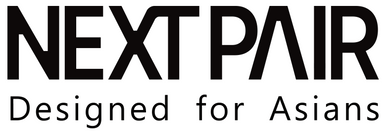As you age, reading small text can become difficult due to presbyopia, a natural decline in near vision. Many people grab cheap reading glasses off the shelf, while others opt for a custom prescription. But is one better than the other? Let’s compare OTC vs. prescription readers to help you make an informed decision.
1. What Are Over-the-Counter (OTC) Reading Glasses?
OTC reading glasses are pre-made magnifying lenses available at drugstores, supermarkets, and online retailers. They are designed for mild to moderate presbyopia and come in strengths ranging from +1.00 to +4.00 diopters.
✔ Pros of OTC Reading Glasses:
✅ Affordable – Typically cost between $10–$50.
✅ Convenient – No prescription needed, easy to find.
✅ Multiple pairs – Cheap enough to keep extras in different locations.
❌ Cons of OTC Reading Glasses:
⚠️ One-size-fits-all lenses – Not customized for each eye’s needs.
⚠️ No astigmatism correction – If you have astigmatism, OTC readers may not work well.
⚠️ Can cause eye strain – Wearing the wrong power or misaligned lenses can lead to headaches and fatigue.
2. What Are Prescription Reading Glasses?
Prescription reading glasses are custom-made by an optometrist based on your specific vision needs. They correct not only presbyopia but also astigmatism, anisometropia (different prescriptions in each eye), and other refractive errors.
✔ Pros of Prescription Reading Glasses:
✅ Perfectly customized – Tailored to your exact vision needs.
✅ Includes astigmatism correction – Provides sharper, clearer vision.
✅ Better optical quality – Reduces eye strain, fatigue, and headaches.
❌ Cons of Prescription Reading Glasses:
⚠️ More expensive – Costs range from $100–$500, depending on lenses and coatings.
⚠️ Requires an eye exam – Needs a doctor’s visit and prescription update.
3. Key Differences: Prescription vs. OTC Readers
| Feature |
OTC Readers |
Prescription Readers |
| Custom Fit |
❌ No |
✅ Yes |
| Corrects Astigmatism |
❌ No |
✅ Yes |
| Different Strengths per Eye |
❌ No |
✅ Yes |
| Price |
✅ Cheap ($10–$50) |
❌ Expensive ($100–$500) |
| Eye Strain Risk |
⚠️ Higher |
✅ Lower |
4. Who Should Use OTC vs. Prescription Readers?
✔ Use OTC Readers if:
-
You have equal vision in both eyes and no astigmatism.
-
You only need glasses for brief reading sessions.
-
You want a budget-friendly backup pair.
✔ Use Prescription Readers if:
-
You have different prescriptions in each eye.
-
You experience eye strain, headaches, or blurry vision with OTC readers.
-
You need multifocal lenses for both reading and distance vision.
Conclusion
OTC reading glasses are a cheap and quick fix for mild presbyopia, but prescription reading glasses provide superior comfort, clarity, and eye health benefits. If you experience eye strain, astigmatism, or an imbalance between eyes, it’s best to invest in a custom pair from an optometrist.
 titanium eyewear
titanium eyewear







